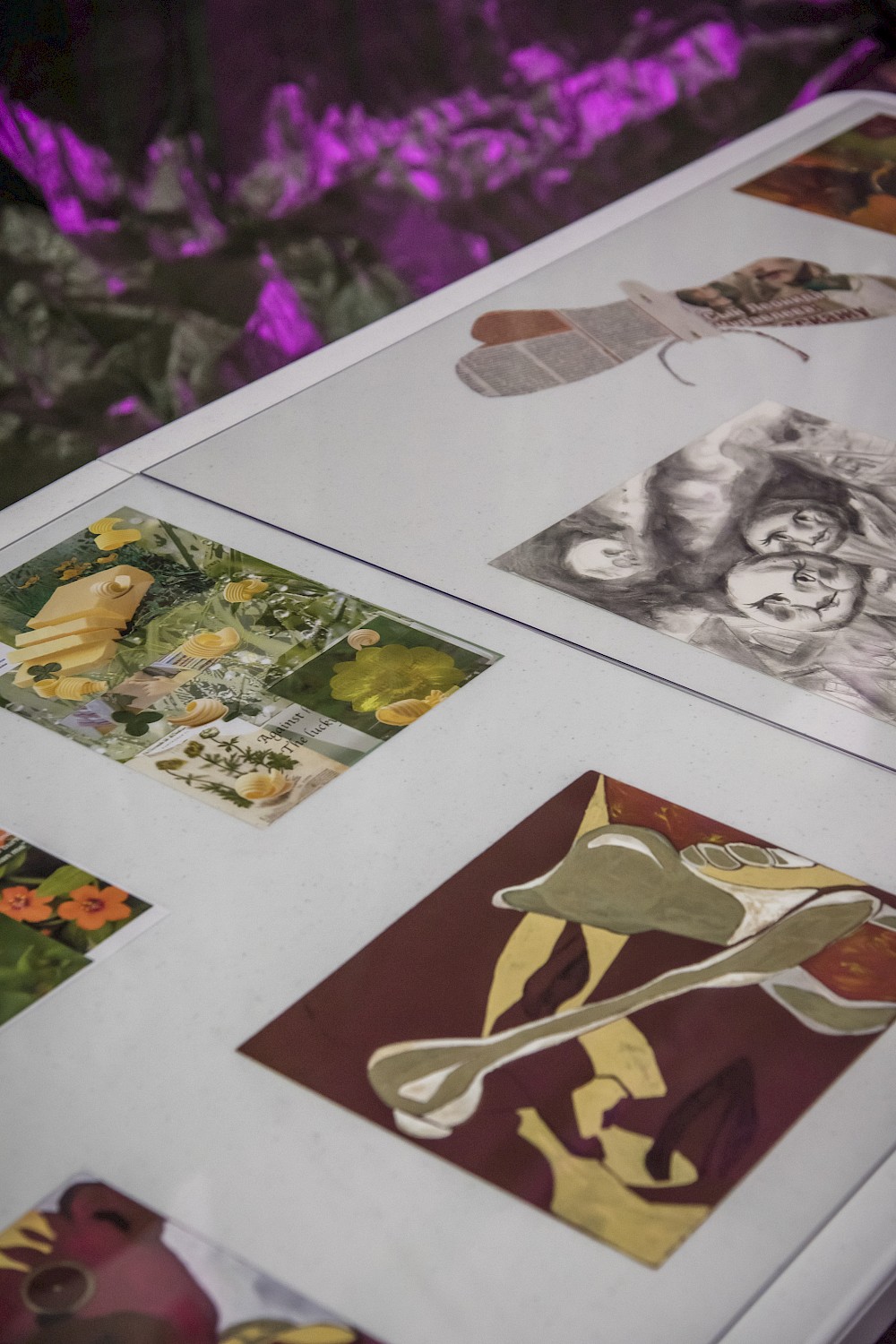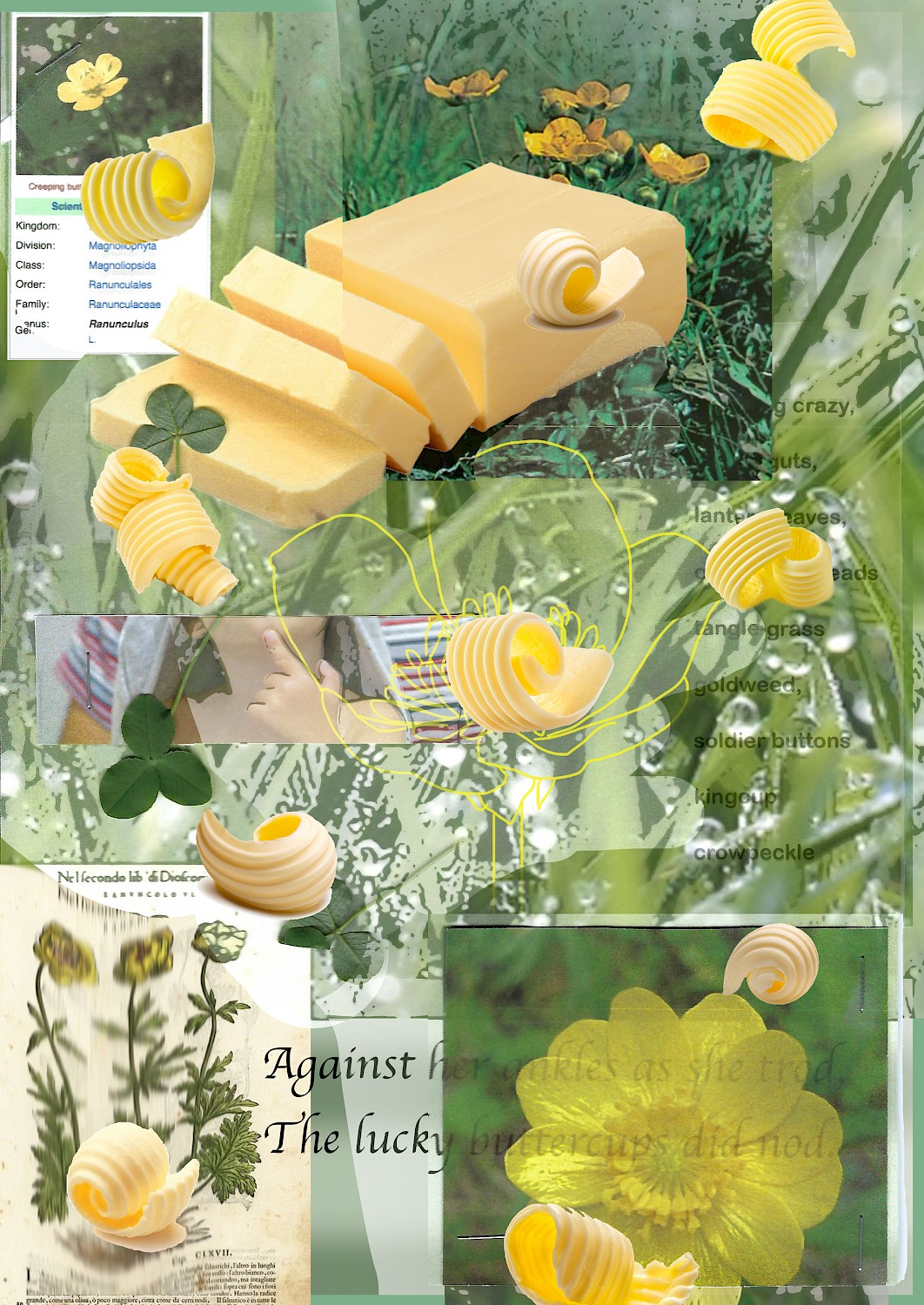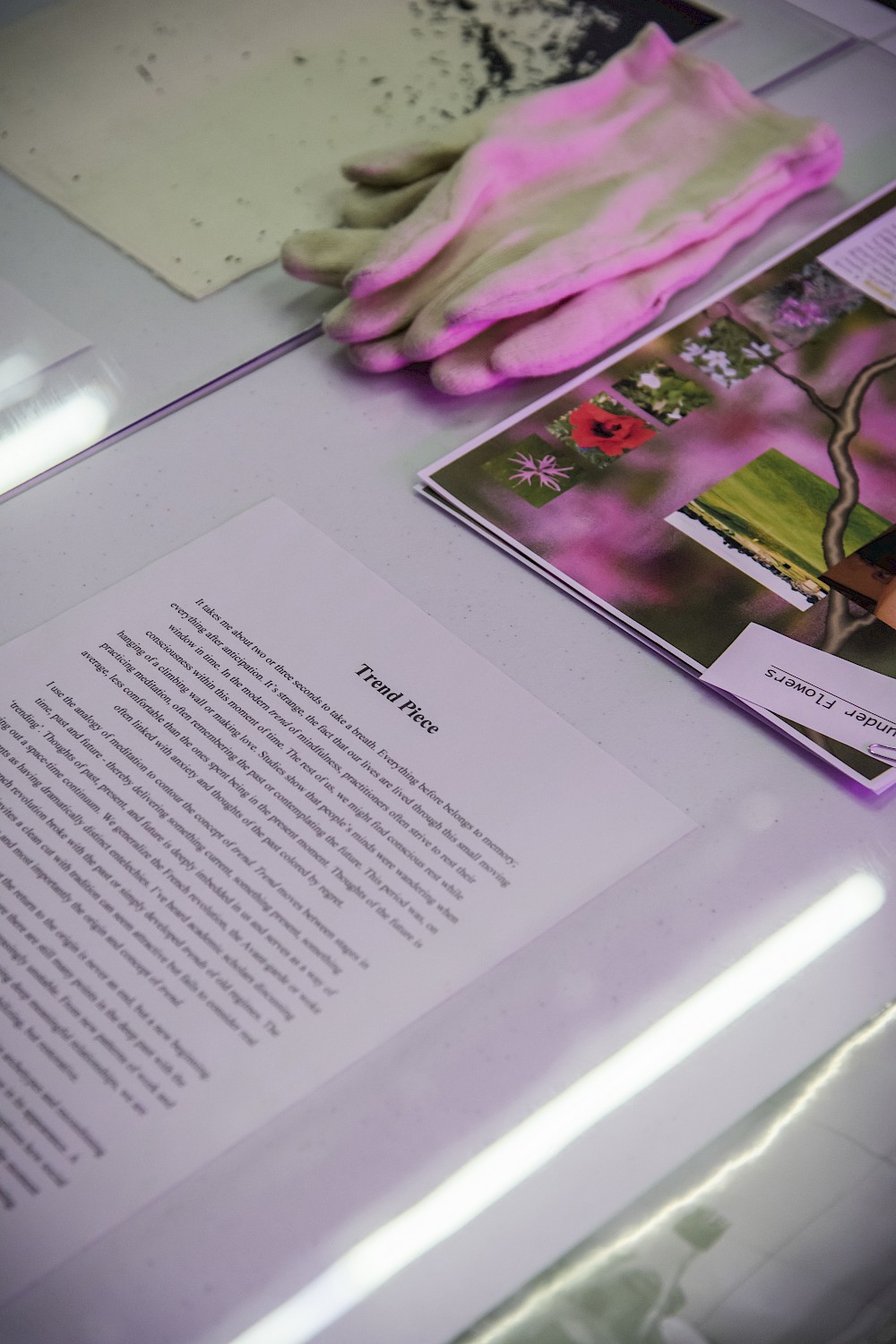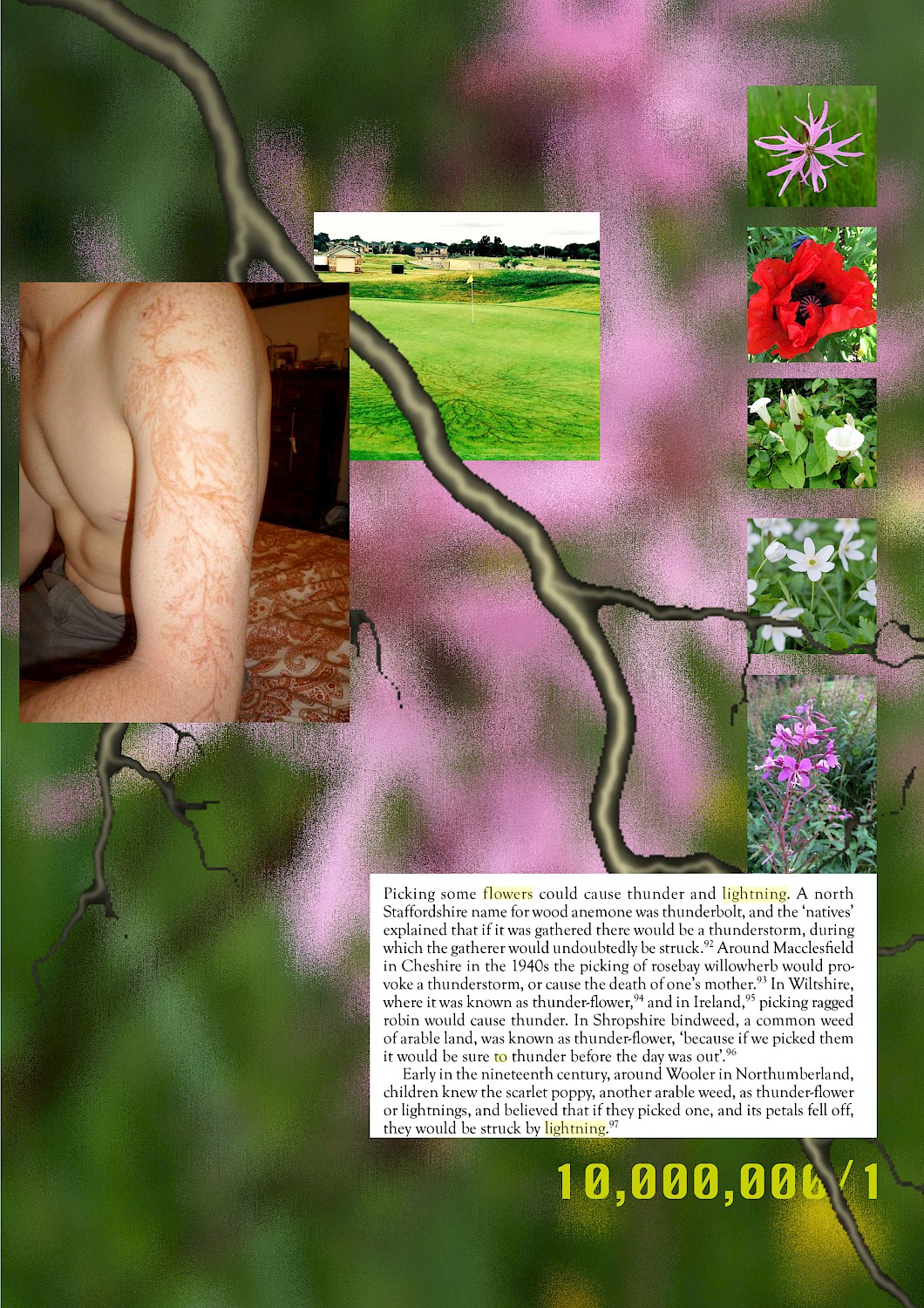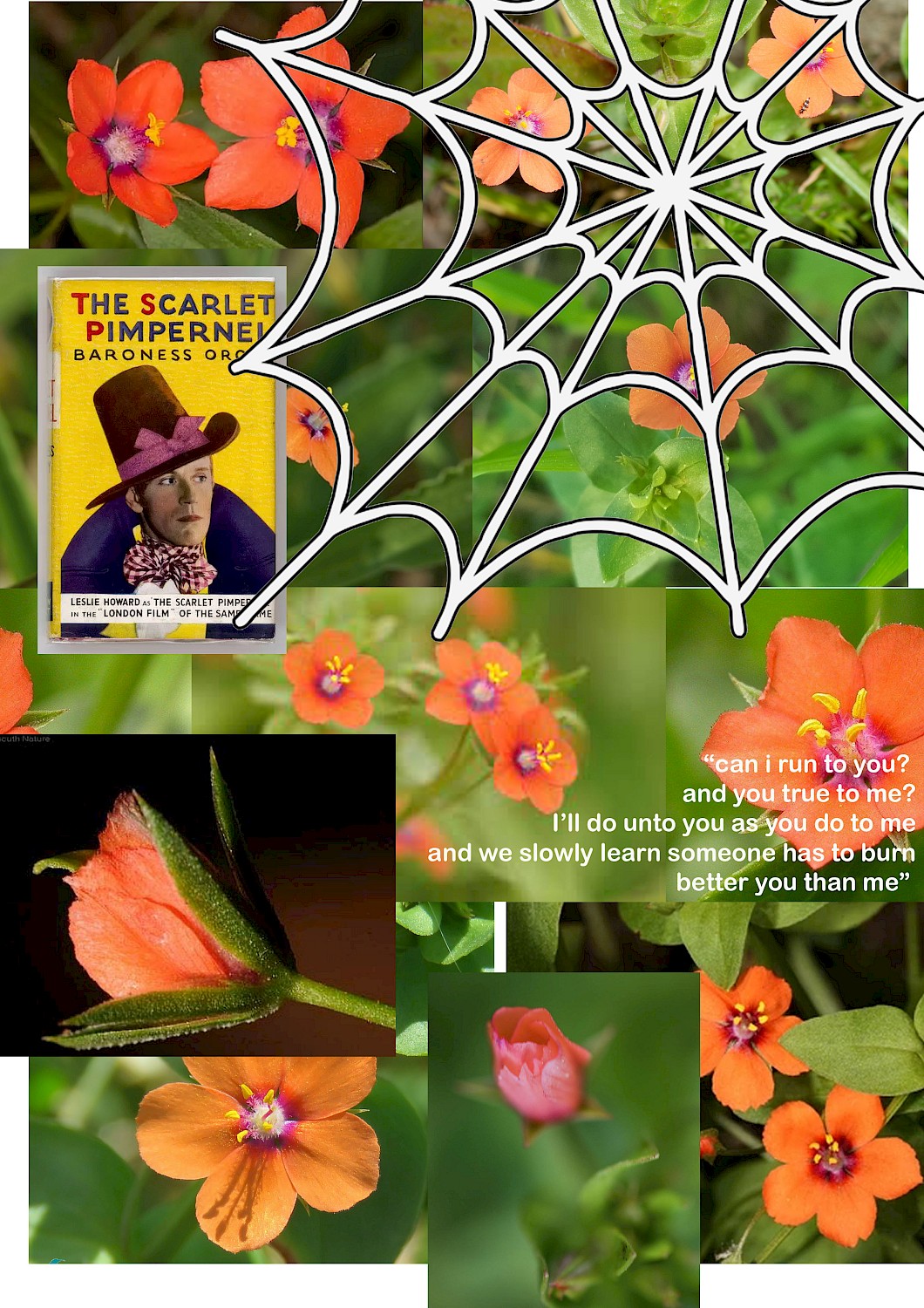Soothsayer Herbaria
Year:
Sothsayer Herbaria exhibited as part of the exhibition Drafts of ecology: URD curated by Theodor Nymark
The series Soothsayer Herbaria is a start to a possibly growing collection of fortune telling plants, where each plant is described as a Digital collage of collected information as opposed to collected and archived plant material. The information about these truth telling plants can be fictional or factual and is not defined. Many tales of plants depicting certain weather changes or reflecting traits in humans are derived from folklore. It is difficult to know whether the descriptions contain some truth, so in this case the herbaria is a collection of stories in relation to the plants.
The three plants chosen to be exhibited here are Ranunculaceae (buttercup), Anagallis arvensis (scarlet pimpernel) and thunder flowers (a mix of wildflowers).
The buttercup is common in children stories and games In relation to one’s love of butter. When holding the flower up to one’s chin, the flower should glow a golden yellow if one has a love of butter. Of course, the flower only glows onto the chin when the sun is hitting it directly leading to the belief of some inherently liking butter and others not. for a child, this is a game of truth and reveals a trait of one’s self. Buttercups were also said to have been used as a dye in butter to create its yellow tone. This is unlikely as the buttercup plant itself is toxic, however the pastoral reference to a dewy green meadow with golden buttercups appropriated for a butter company wanting to advertise freshness and traditional quality is feasible.
The scarlet pimpernel, often referred to as the poor man’s weathervane or the shepherd’s clock, as it adapts to weather conditions. When the sun shines brightly, the flower is fully open revealing a scarlet center and yellow stamens. When the temperature drops, the flower closes to protect itself from the elements. Herders, shepherds and farmers are said to have and still use these plants to determine wether a storm is approaching as they tend to grow along the edges of fields and roads. The scarlet pimpernel also lends its name to the novel by Baroness Orczy. A story about a cunning hero, rescuing aristocrats during the French Revolution. The protagonist has two personalities he embodies: his quiet and docile outer profile and the courageous hero in disguise. This trope went on to be used countless times and essentially within
comic books/graphic novels in the likes of Zorro, Spiderman and batman to name a few.
The opening and closing of the scarlet flower is much like the showing and hiding of Batman’s cloak. A personality that is switched on and off.
Thunder flowers refers to a group of flowers that were said to affect lightning when picked. Once picked, the location of the flower would then be struck by lightning. Within the work itself there is a short description of several accounts of this belief in different formats relating to this colloquial way of adapting a tale from community to community. The images shown are the several plants that are related to this ‘thunder flower’ belief but also depicts organic motifs on a man's arm and a golf course. These are said to have originated from a lightning strike and as the electrical current spreads out it leaves a root-like pattern. Perhaps the lightning itself is the flower removed? Could these root like, organic shapes have been witnessed after picking flowers and stories created from this? Would you dare to pick one of these flowers to find out?
Photos by Theodor Nymark

